Blog
19 Most Common Pinterest Mistakes You’re Making in 2022
Are you making these common Pinterest mistakes? As bloggers, we enjoyed a few years where Pinterest was a platform we could count on to build our businesses. Other social media platforms like Instagram and Facebook changed, but Pinterest remained consistent. However, in 2020 Pinterest saw huge growth due to the pandemic and it started to implement changes to the way we use it based on feedback from pinners. It seemed to update its best practices so quickly that it was hard to keep up! That means you could be making a few mistakes when it comes to marketing your blog on Pinterest today.
In this post, I’ll share with you the top mistakes I see bloggers making on Pinterest so you can avoid them, continue to drive traffic to your blog, and establish yourself as an authority on your subject matter using Pinterest.
1. Not Using Idea Pins
Pinterest introduced Story Pins as a beta feature in 2019 which evolved into the Idea Pins we know and loathe love today. There has been quite a bit of hesitation around using Idea Pins because they don’t link and they’re time consuming to make.
I get it.
When we are so used to being able to add our blog post url to every pin image it’s a bit of a shock to say we can’t do it anymore.
However, Idea Pins can establish you as an authority in your niche, build trust within your community, and increase affiliate sales (yes, you can link to certain affiliate programs).
Plus, Pinterest is prioritizing them so by using this feature you will elevate your entire Pinterest profile.
Once you get the hang of making Idea Pins, the time it takes to create them significantly decreases. In my opinion you don’t need any fancy templates like you may use with static pins. Simply upload the images or videos into the platform using your phone and use the Pinterest features to create them.
Idea Pins have their own set of best practices to follow so that you can get the most benefit from using them in your business. My biggest piece of advice is to start simple and try different types of Idea Pins to see what resonates with your audience.
2. Not Doing Keyword Research
While Pinterest is a social media platform, it is used differently compared to Instagram and TikTok. While the Instagram or TikTok user is OK with the feed or fyp telling them what they want to see and somewhat mindlessly scrolling through, a Pinterest user turns to Pinterest to find something specific. Therefore Pinterest is much more of a search engine which means you need to be investing time in keyword research and learning where to appropriately use keywords.
Using keywords leads to quality Pinterest SEO and will allow your content to show up in Pinterest search results. Also, even if they aren’t actively searching for your idea, if it’s similar to their search history, you increase your probability of showing up in their home feed.
3. You’re Using Keywords Wrong
One Pinterest mistake I continue to see being made is using keywords incorrectly. There seems to be this, do it until I get caught, mentality on Pinterest. And it shows up when it comes to Pinterest keywords.
Pinterest uses the description of your pin to categorize it so it shows it to the correct people. This does not mean to stuff the description with keywords separated by lines. Use keywords in full and complete sentences to describe your pin.
Also make sure the Pin title uses the keyword and that it (or a variation of it) is used in the text overlay of the Pin graphic.
Then, be patient. Allow Pinterest to analyze and categorize your pin over the next few months and see if it starts to rank in the search results.
4. You’re Still Using Hashtags
For a hot minute Pinterest encouraged the use of hashtags. That hot minute has passed.
I have to admit, I just looked at a few of my Pinterest boards and they still have hashtags, so I’ll be updating those as soon as I finish writing this.
But hashtags are not searchable on Pinterest, they no longer link anywhere, and there is no advantage to using them.
If they’re in your board descriptions, like mine, remove them.
It’s not necessary to go back through old Pin descriptions to remove them. Now that you know better, you can do better and leave them out of your Pin descriptions.
Instead of adding hashtags to your descriptions, create detailed sentences using the keywords you found during your research.
5. You Have an Incomplete Profile Description
When is the last time you thought about your Pinterest profile description? If you’re anything like me, and some of my clients, probably when you first made your profile.
Spend 5-10 minutes evaluating if it accurately describes your business, adding in keywords as appropriate.
I suggest evaluating your profile description every quarter to ensure it continues to align with your business goals.
6. Your Website is Unclaimed
Part of having a complete Pinterest profile is making sure that you’ve claimed your website on Pinterest. Doing this not only protects your content but it provides you with a website link in your bio. The latter of which is increasingly important as Idea Pins can direct someone to your profile.
7. Re-Pinning the Same Pin
Gone are the days when we could pin the same image to multiple group boards then share that pin image to a pinterest sharing group on Facebook so it looks like our entire profile is just one pin image.
AND seeing massive Pinterest traffic as a result!
If you’re still doing this. Please stop. You risk having your account flagged for spam by, well, spamming Pinterest with the same image!
Instead, start creating fresh pin images for content that performs well on Pinterest. Once you have these fresh pin images with new descriptions, schedule them using Tailwind.
For your new blog posts create multiple pin images that you can spread out on Pinterest over a few weeks or even months.
Whether you’re creating fresh pins for new or old content, you should only be pinning to the same URL once per week. So be sure to space them out.
One way to encourage repins is to participate in Tailwind communities. You can join up to 5 Tailwind communities with your Tailwind membership. Start with those 5, thoughtfully contribute and repin other people’s pins, and see if it works to grow your account.
8. Only Creating One Image per Piece of Content
As mentioned above, the days of being able to create one pin image and repeatedly pin it in multiple places are over.
In 2020, Pinterest started requiring fresh pins. A fresh pin is an image or video that Pinterest has not seen before. It can link to the same URL as other images, but the graphic itself must be different.
Simply changing colors of the text or moving your logo from the bottom to the top does not constitute a fresh pin. You can use the same image however and this Tailwind article shows exactly how to do that effectively.
To do this effectively and efficiently, I recommend having 5 Canva templates at the ready for you to create high quality Pin graphics for each new post. This will make fresh pin creation much more streamlined and not have you spending hours on this one aspect of running your business.
9. You’re Still Contributing to Huge Group Boards
Pinterest brought about group boards as a way to encourage collaboration, but not in the way that we used them.
The premise was if an individual hired a travel agent to plan their trip, the agent could create a group board for that specific trip and pin related posts about where to stay, what to do, what to pack etc. This would help the handful of people on the group board plan a trip.
Travel bloggers took that and ran in the opposite direction 🤪.
We said: OR we can add a bunch of Pinterest accounts, share our pins there. Leading to more views, traffic, and followers.
Pinterest caught on, as they always do, and shut it down.
It’s a better tactic to use Tailwind communities to encourage others to re-pin your pins to increase the potential that they see a wider audience.
10. Your Board Topics are too Broad
Part of a solid Pinterest foundation is having Pinterest board topics that are closely related to the content you share.
For instance, if you write about travel in a specific country or state, of course you should have a board for that location, but also the cities within it. If you write about Peru travel you should have a board for Peru travel as well as travel in Cusco, Lima, Machu Picchu, Arequipa etc.
Especially if you write about those locations. If you don’t write about them, it’s ok not to have a board about it.
Take a look at your Pinterest board names. How broad are they? Does your profile predominantly have broad, catch all boards?
If so, start creating specific boards for your topics. When you pin, your pin should first be pinned to the most closely related board.
Also, take a moment to evaluate if your board title and description are optimized with keywords.
11. You’re Using the Wrong Image Sizes
Horizontal or excessively long vertical images do not perform well on Pinterest. Pinterest’s preferred image sizes are 1000 x 1500 pixels. You can input those dimensions into Canva to ensure you’re using the correct size.
12. You’re Ignoring Mobile
While you and I might use computers to create Pin graphics and interact with Pinterest, the majority of Pinterest users access Pinterest on their phones. This means that the big beautiful graphic you made with pretty fonts and colors that looks awesome on your big desktop screen, may actually be hard to read on the mobile app.
To ensure that your pin designs are mobile friendly, zoom out on them in Canva. Once they’re designed, make them a bit smaller so you can see what they will look like on a phone. I generally take it to 25%, then adjust anything that is hard to read, unclear, or looks messy at a smaller size.
13. You’re Using Free Stock Photos
I’ll never forget the time I was scrolling through Pinterest and saw the same stock photo on someone else’s pin that I’d used on mine. I had to do a double take to ensure that the pin wasn’t stolen.
Thankfully, it wasn’t. But it was eye opening to realize that everyone has access to the same free stock photo sites and if I like a photo from them, it’s likely that another blogger will too.
I’ve since used a variety of paid stock photo sites like DepositPhotos and Haute Stock. However, I’ve canceled them and primarily use my own high quality photos or Canva Pro photos.
If Pinterest wants fresh pins and there’s a possibility that another business will use the same free stock photo, it’s best to avoid the mess and upgrade to Canva Pro for easy access to high quality stock photos.
14. There is No Call To Action on your Pins
More often than not when it comes to Pinterest marketing, we need to tell our potential readers exactly what to do. This call to action should be placed on your pin image as well as in your pin description.
On the pin image, a simple “Read More” or “Details Inside” is sufficient.
If there is a freebie the reader could get by signing up (think email subscriber growth) you could add “free pdf packing list inside#. This will encourage the reader to click through to your blog, read your post, and sign up for your email list via a freebie.
If there aren’t any calls to action on your graphics or descriptions, begin including them.
15. Your Pinning is Inconsistent
Pinterest loves consistent pinning of quality content. The amount that you pin each day doesn’t really matter. Even one quality fresh pin each day can help grow your account and help you reach your goals with Pinterest.
The best way that I stay consistent with pinning is using Tailwind to schedule my pins. I spend a few hours at the beginning of each month to ensure that my Tailwind schedule is filled with fresh pins for at least the next 30 days.
Using a Pinterest scheduler helps me stay organized, consistent, and frees up time to focus on other business tasks.
Tailwind isn’t the only option. You can use Pinterest’s native scheduler to schedule pins two weeks in advance. Later and Planoly are also approved Pinterest scheduling tools.
16. Not Pinning in Advance
One of the biggest mistakes I see businesses making on Pinterest is not pinning in advance.
It can take 3 months for a pin to start showing up in the search results. This means if you have holiday content and you publish the pins for it one week before the holiday, it will more than likely not convert to traffic.
That may work on Instagram or TikTok where the user is involved with what’s going on in the moment. But people go to plan on Pinterest. They are thinking about their holiday decorations months in advance of the actual holiday.
And in the travel world, people tend to plan trips months in advance as well. So if you have winter destination posts you want to drive traffic to, you should be creating and publishing the pins for them in the summer!
17. Your Website is not Optimized
Ideally, your pin graphics encourage pinners to click through to your website where they can read the related blog post, sign up for your email list, consider purchasing your product or becoming a client.
But if your website is not optimized for it, the pinner will click away! It doesn’t matter how beautiful your graphics are or how well you used keywords,if your website is not user friendly, you will not create raving fans of your business.
Things like slow loading time, too many pop ups, or your pin leading to the incorrect page will all deter people from staying on your website.
To fix this, spend time analyzing your site speed and fixing any errors. When you’re pinning content on Pinterest double check that the link is correct before hitting publish.
18. Trying Too Many Tactics at Once
Every Pinterest coach/mentor/course will teach you how to use Pinterest slightly differently. One will say to only manual pin. While the other will say to only use Tailwind. The next will say don’t share other people’s content, while the next says, it’s ok to share other people’s content a bit.
It’s overwhelming, can lead to shiny object syndrome, and inconsistency.
I recommend following one plan for at least a month and evaluating the results. Maybe you prefer manual pinning over Tailwind. Maybe you do see growth strategically sharing to Tailwind communities.
Keep what is working for your audience and your sanity and ignore the rest.
But, no matter what anyone else says, do create Idea Pins 🙂
19. Not Using Pinterest Analytics
Analytics are key to understanding what is and is not working on Pinterest. It’s important to know your key performance indicators, beyond your monthly viewers number, and evaluate them monthly. Why would you want to keep putting effort into a tactic that’s not working for you?
Pinterest analytics are a good place to start, as it will show you your top performing pins by a variety of filters. The most important of which for static and video pins is outbound clicks because that means pinners clicked through to your website from that pin! This is what we want!
Notice any trends in your top performing pins. Is there a specific design that works really well? Are there calls to action on the graphic?
You can also use Google Analytics and Tailwind Analytics to evaluate your Pinterest performance.
Using Google Analytics you can see the top landing pages that come from Pinterest and your overall blog traffic that comes from Pinterest.
Using Tailwind Analytics you can see your top performing pins and boards as well as get a good picture of the overall health of your Pinterest account using the engagement rate.
How to Fix Your Pinterest Mistakes
If you were reading this post and nodding along because you’re making these common Pinterest mistakes, know that it’s OK. Now that you’re familiar with Pinterest’s best practices you can move forward and start making changes. I suggest starting with a Pinterest profile audit, which is a service I offer if you don’t have time to do it.
Whether I audit your Pinterest or you do it yourself keep these Pinterest mistakes in mind as you evaluate how your Pinterest profile is set up and how it’s helping you achieve your business goals.
Helpful Pinterest Resources
How to Claim Your Website on Pinterest
How to Design Click Worthy Pin Graphics
Where to Find + How to Use Pinterest Keywords
Understanding Pinterest Analytics
Find this post helpful? Share it to Pinterest so others can find it!
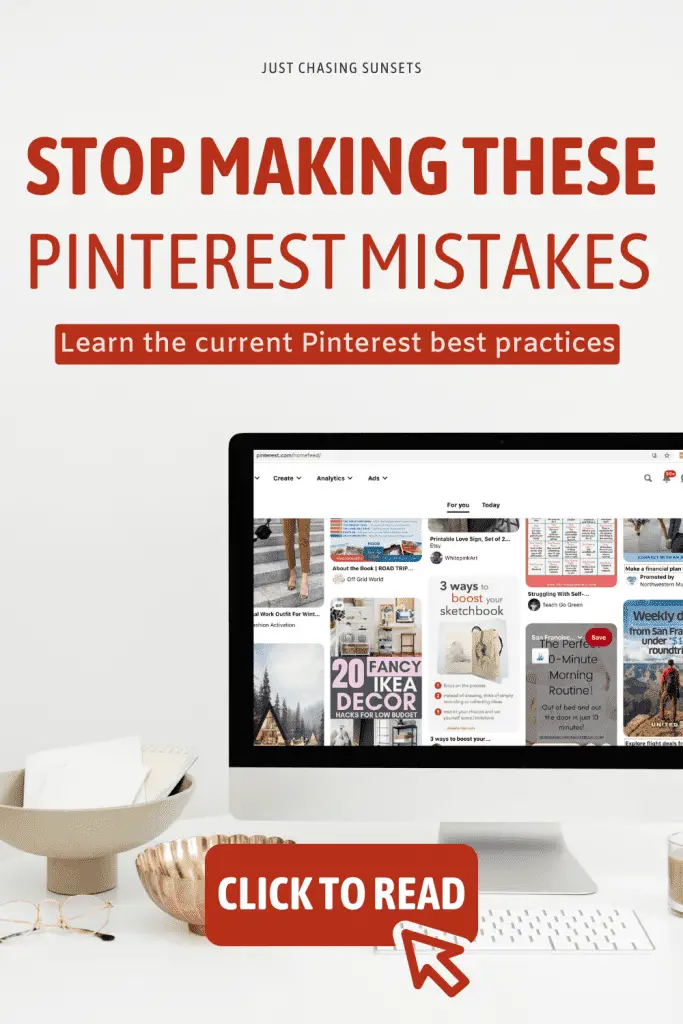
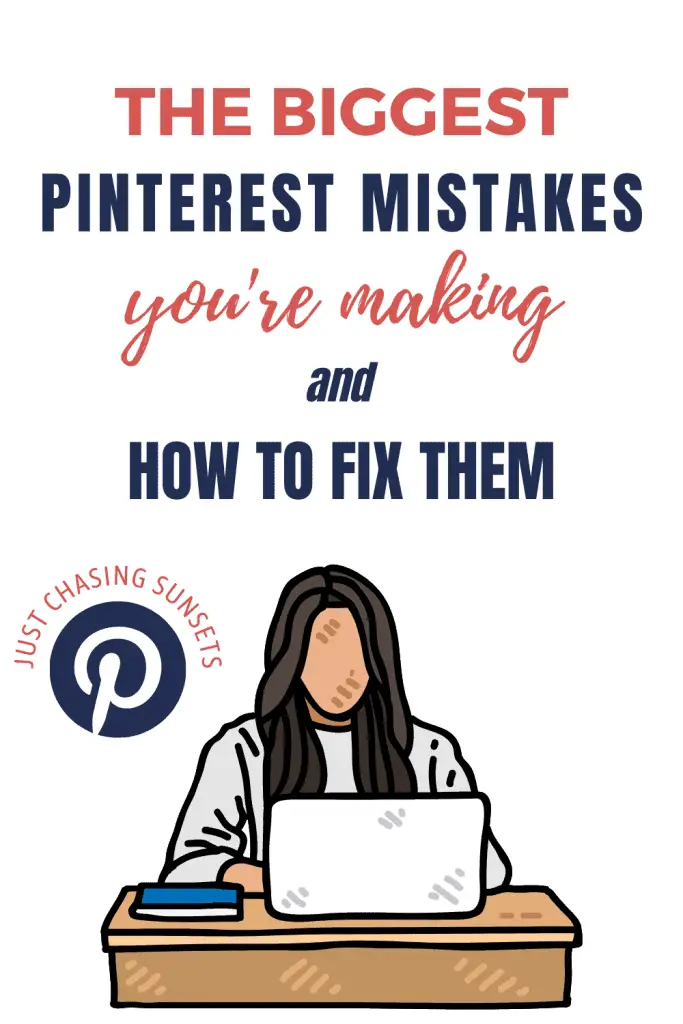
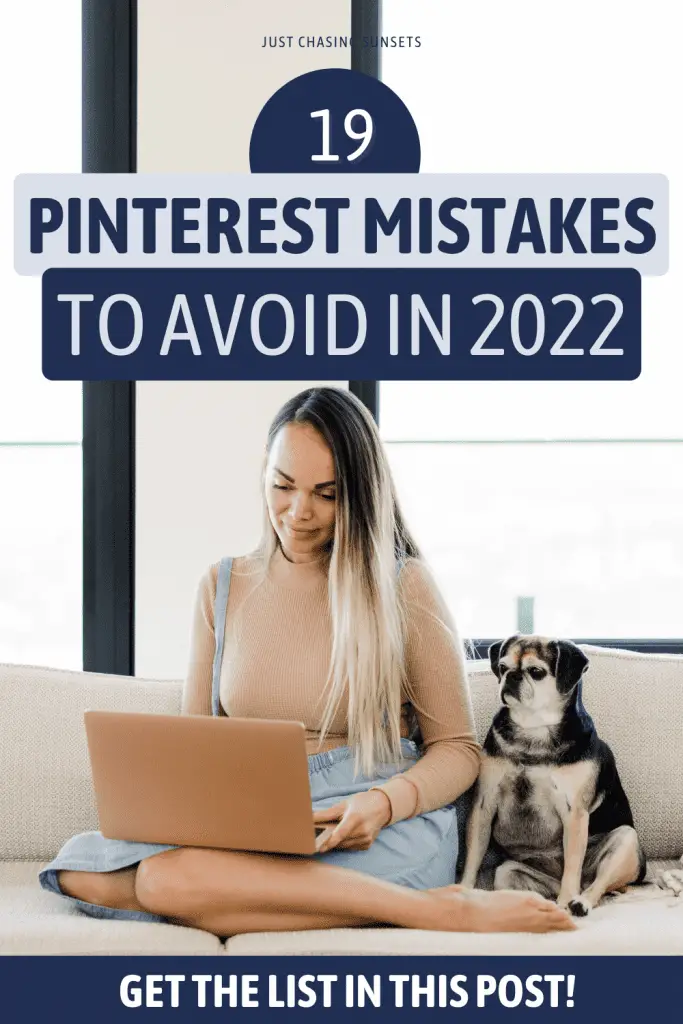
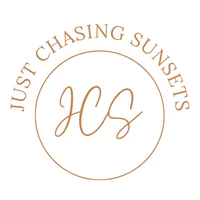
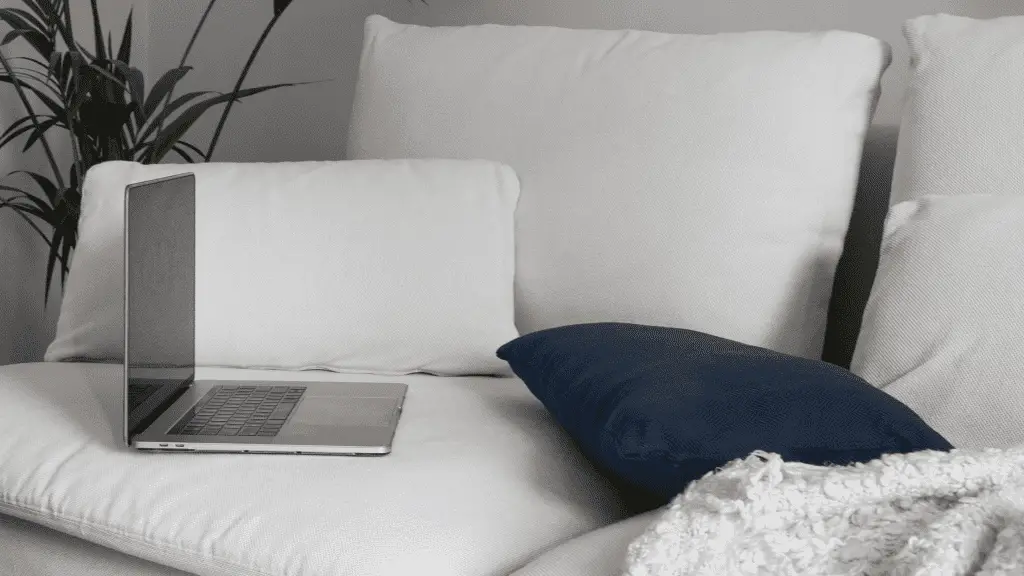
Hello! I just started a blog and while I’ve been a Pinterest user for a long time, I wanted to understand more about being a Pinterest creator so thanks for this article!